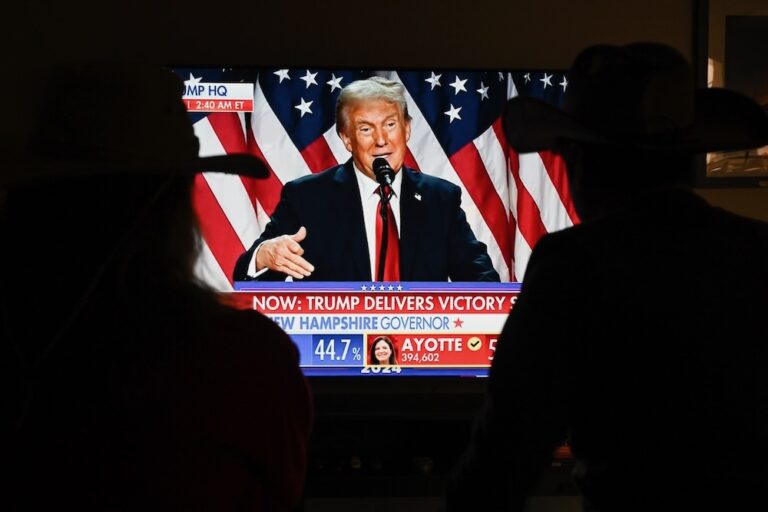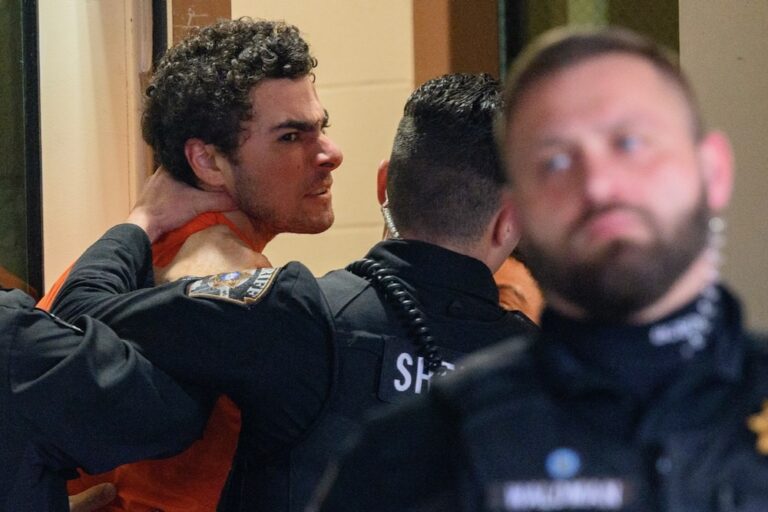(RSF/IFEX) – On 26 March 2003, RSF wrote to U.S. General Tommy Franks, commander of the coalition forces operating in Iraq, asking him to order an immediate inquiry into the exact circumstances of the death of British television reporter Terry Lloyd, of Independent Television News (ITN), and the disappearance of his French cameraman, Frédéric Nerac, […]
(RSF/IFEX) – On 26 March 2003, RSF wrote to U.S. General Tommy Franks, commander of the coalition forces operating in Iraq, asking him to order an immediate inquiry into the exact circumstances of the death of British television reporter Terry Lloyd, of Independent Television News (ITN), and the disappearance of his French cameraman, Frédéric Nerac, and Lebanese interpreter Hussein Othman, on 22 March, near Basra, in southern Iraq. Various sources have said they came under fire from coalition forces.
The British Defence Ministry has said it opened an inquiry into the death of Lloyd, who was 51. On 25 March, a ministry spokesman said he had no new details and did not want to comment on reports that Lloyd and his colleagues were hit by friendly fire. RSF has urged the British authorities to include the disappearances of Nerac and Othman in their inquiry.
The ITN crew, which was not “embedded” in any coalition unit, and which was travelling in two jeeps marked “TV”, came under fire at Iman Anas, as it was approaching Basra. According to ITN cameraman Daniel Demoustier, who was wounded in the incident, the jeeps came under heavy fire from coalition forces. He said this occurred after they found themselves facing Iraqi soldiers and had turned back. At this point, coalition tanks opened fire on the two vehicles, which took direct hits, he said. “They were probably aiming at the Iraqis, although I am sure the Iraqis were trying to surrender,” Demoustier said. “They were killed within several minutes,” he added.
The toll on the news media after seven days of fighting in Iraq is two journalists killed, two reported missing for five days, at least two others wounded, and two arrested by the Iraqis.
Two Iranian journalists working for the satellite channel Dubai Television, reporter Ali Montazeri and cameraman Abdolreza Abbasi, were arrested by Iraqis in civilian dress on 24 March, shortly after entering Iraq across the Iranian border at Arvand Kenar, with the aim of going to the Al-Faw peninsula (see IFEX alert of 27 March 2003). According to Montazeri’s son, who witnessed their detention from the other side of the border, they were detained by Iraqi security agents. Other sources said the Iraqis handed them over to British forces. Abbasi also worked for the Lebanese television channel LBC.
Australian cameraman Paul Moran, aged 39, who worked for the Australian television channel ABC, was killed by a car bomb in Iraqi Kurdistan on 22 March. ABC reporter Eric Campbell was injured in the same explosion. Australian Foreign Minister Alexander Downer said a suicide attack by an Islamic terrorist organisation linked to al-Qaeda was carried out in reprisal for the U.S. bombing of Iraq. Downer identified the group as Ansar al-Islam, which had been active for some time in northern Iraq. Officials of the Patriotic Union of Kurdistan (PUK) also blamed the attack on Ansar al-Islam.
These two confirmed deaths must be added to the long list of journalists who have been killed in the course of their work. A total of 538 journalists were killed from 1992 to 2002, almost half of them in war zones. In 73 percent of these cases, the victims were identified as journalists and were killed in attacks or by gunfire. Only 27 percent of the deaths were accidental.
Four journalists were killed in the 1991 Gulf War. German photographer Gad Gross was shot dead by the Iraqi army in Iraqi Kurdistan. Three British freelance journalists who were covering the war for the BBC were killed, presumably by their Turkish guide.


